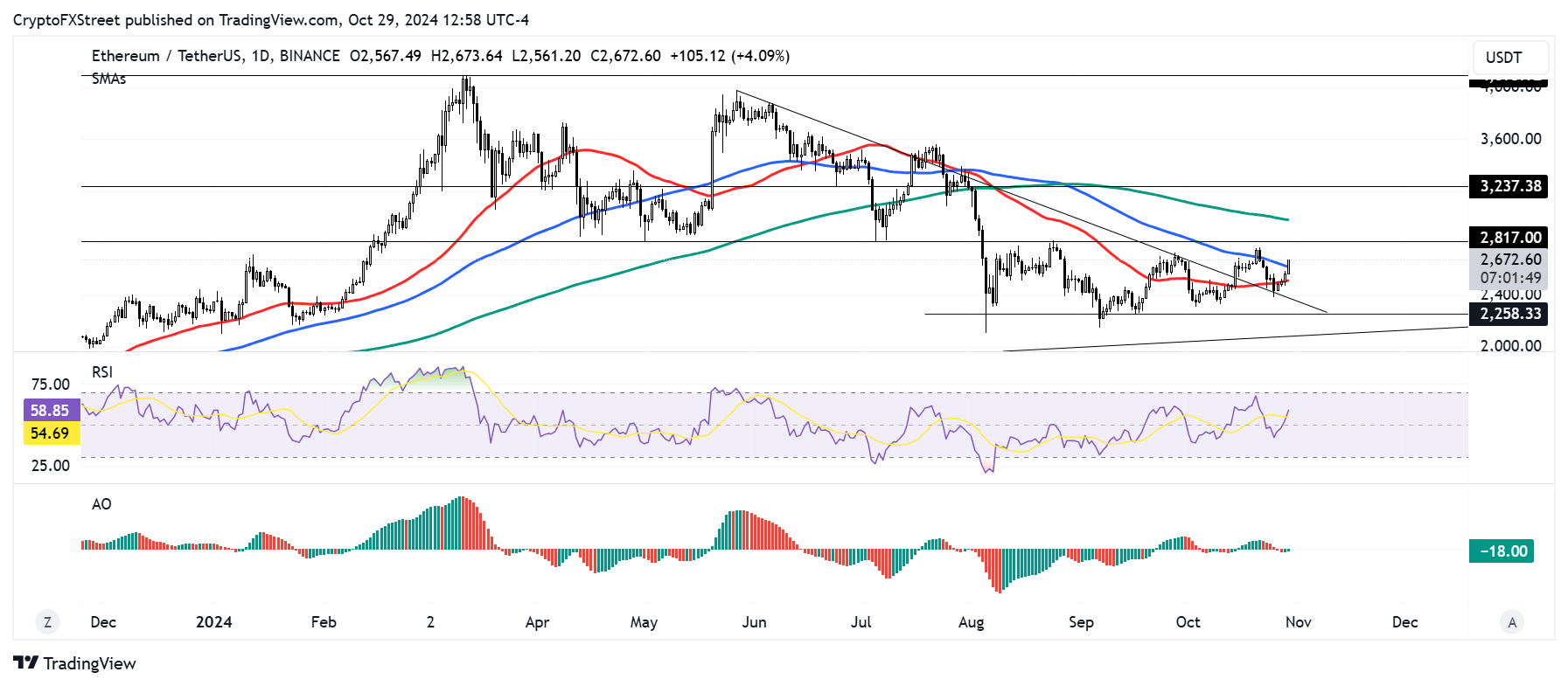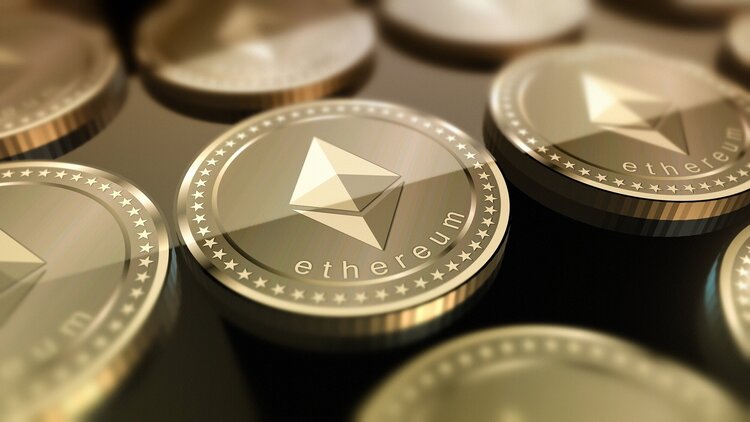Ethereum price today: $2,670
- Ethereum could be set for a bullish future following Vitalik Buterin’s latest series of blog posts.
- The six-part blog post outlines an ambitious roadmap for how Ethereum will overcome current challenges.
- Ethereum could convert the resistance at $2,817 into support after bouncing off the major trendline.
Ethereum (ETH) rose more than 7% on Tuesday and is showing signs of reclaiming the key price level of $2,817. This price increase comes despite criticism of ETH's poor performance and co-founder Vitalik Buterin's six-part blog post detailing Ethereum's potentially bullish future. .
Ethereum’s Buterin Releases Issue 6 of Roadmap Blog Post Series
Ethereum has come under increasing criticism from members of the cryptocurrency community for its underperformance compared to Bitcoin and Solana in the current market cycle. While Bitcoin and Solana are down about 3% and 31% from their all-time highs, Ethereum has been a laggard and is down nearly 50% from its all-time high of $4,878.
Despite the poor performance, the sixth in a series of blog posts that Ethereum co-founder Vitalik Buterin started in early October suggests a bullish future for Top Layer 1. In a blog post titled “Splurge,” Buterin highlighted four key goals for this stage of Ethereum. Ethereum roadmap:
- Brings the EVM (Ethereum Virtual Machine) into a high-performance, stable “endgame state.”
- We introduce account abstraction within the protocol, allowing all users to benefit from more secure and convenient accounts.
- Optimize transaction fee economics and increase scalability while reducing risk.
- Explore advanced cryptography that could make Ethereum much better in the long run.
In a six-part blog post series, we outline an ambitious roadmap detailing how Ethereum will overcome its current challenges, calling them The Merge, The Surge, The Scourge, The Verge, and The Purge. , advertised as The Splurge.
Vitalik explained the Ethereum roadmap through six detailed blog posts. This remains the most ambitious and powerful roadmap in the cryptocurrency space.
I want this to be shown to the world.
I believe it will happen.
I'm bullish on ETH.
The destination is clear. pic.twitter.com/Dp2SmjGgOS
— Ryan San Adams – rsa.eth (@RyanSAdams) October 29, 2024
Other important goals in the five issues mentioned above include increasing the viability of staking for solo stakers, reducing the risk of attacks on Ethereum by 51%, 100,000 TPS in L1+L2, and excessive value extraction from users. minimizing risks, inheriting Ethereum's core properties, stateless clients, reducing client storage requirements, etc.
Meanwhile, Ethereum's staking yield also lags behind other top staking-based protocols, according to Kaiko Research.
“Yields on ETH staking are currently lower than those offered by other major layer 1 protocols such as Cosmos, Polkadot, Celestia, and Solana, with rewards ranging from 7% to 21%,” Kaiko analysts said. I pointed it out.
In other news, the U.S. Ethereum exchange-traded fund (ETF) recorded net outflows of $1.1 million on Monday, according to Coinglass data.
Ethereum price prediction: ETH aims for key level of $2,817
Ethereum was trading around $2,670, up 7% on the day after $36.32 million in liquidations. According to Coinglass data, long and short liquidations accounted for $5.63 million and $30.69 million, respectively.
The top altcoin is trading within a major rectangular channel with resistance and support levels of $2,817 and $2,258, respectively.
ETH could reverse the $2,817 resistance level to the support level after bouncing off the key downtrend line extending from May 27th. Such a move could trigger a rise in ETH above the psychological level of $3,000 towards the $3,237 resistance.

ETH/USDT daily chart
However, to increase its upside potential, ETH needs to sustain long-term movement above its 100-day and 50-day simple moving averages (SMAs).
The Relative Strength Index (RSI) indicator is above the midline and above the SMA, indicating a possible bullish move.
The Awesome Oscillator is below the midline, but displays a series of red bars followed by a series of green bars. This indicates that the tide is turning in favor of bullish traders.
A daily candlestick below the downtrend line extending from May 27th will invalidate the bullish theory.
Ethereum FAQ
Ethereum is a decentralized open-source blockchain with smart contract capabilities. Its native currency, Ether (ETH), is the second largest cryptocurrency by market capitalization and number one among altcoins. The Ethereum network is tailored for building cryptographic solutions such as decentralized finance (DeFi), GameFi, non-fungible tokens (NFTs), and decentralized autonomous organizations (DAOs).
Ethereum is a public decentralized blockchain technology that allows developers to build and deploy functional applications without the need for a central authority. To facilitate this, the network leverages the Solidity programming language and the Ethereum virtual machine, allowing developers to create and launch applications with smart contract functionality.
A smart contract is a publicly verifiable piece of code that automates an agreement between two or more parties. Essentially, these codes self-execute the coded actions if a given condition is met.
Staking is the process of earning revenue from idle crypto assets by locking them in a cryptographic protocol for a specified period of time as a means of contributing to security. Ethereum transitioned from Proof of Work (PoW) to Proof of Stake (PoS) consensus mechanism on September 15, 2022 in an event dubbed “Merge”. This merger was an important part of Ethereum's roadmap to achieve high levels of scalability, decentralization, and security while maintaining sustainability. Unlike PoW, which requires the use of expensive hardware, PoS reduces the barrier to entry for validators by leveraging the use of cryptographic tokens as the core foundation of the consensus process.
Gas is a unit that measures the transaction fees users pay to conduct transactions on Ethereum. Gas can be very expensive when the network is congested, leading validators to prioritize transactions based on fees.

